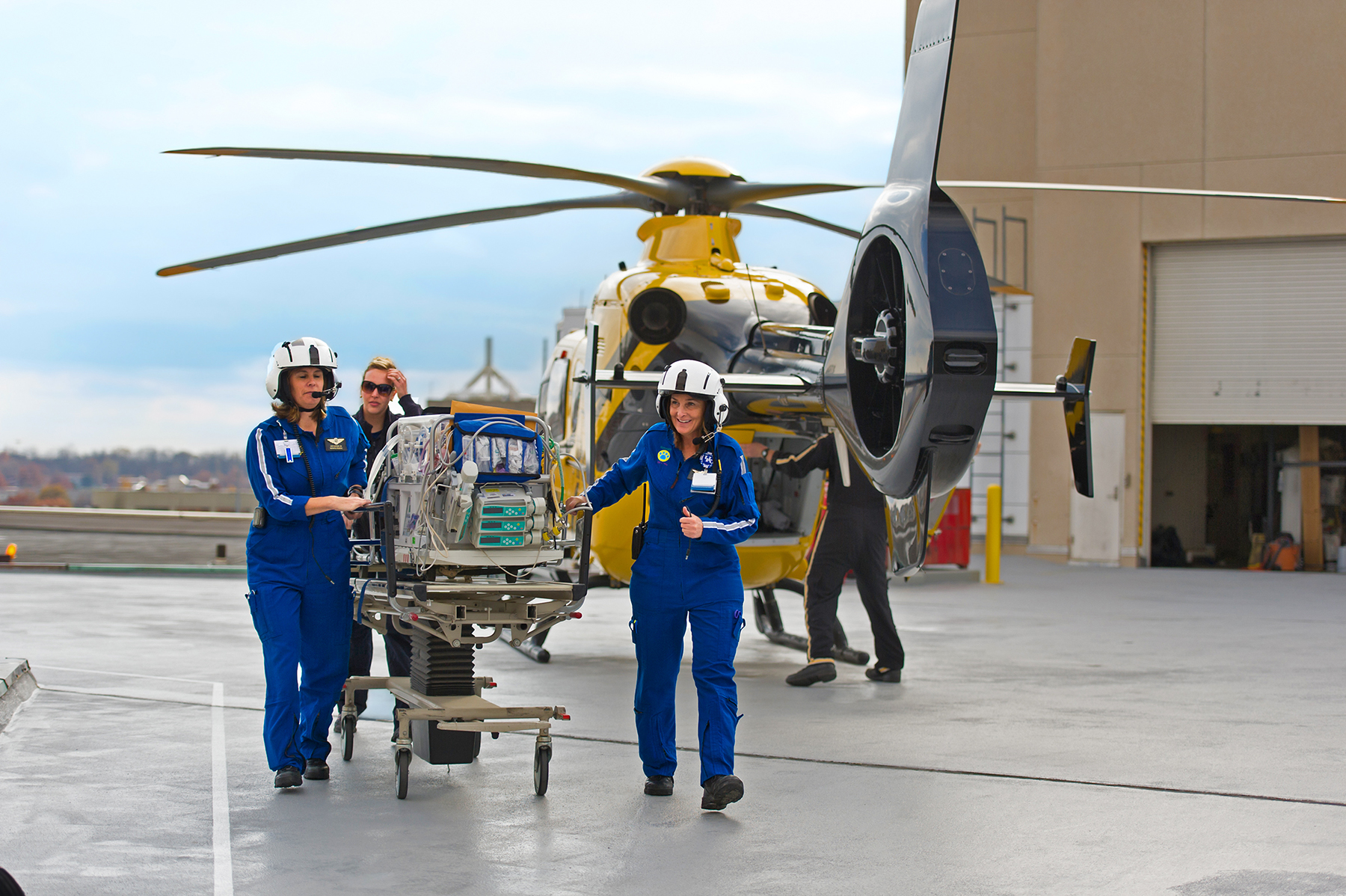See how our Kentucky Kids Crew jumps into action to save lives

26 minutes.
That’s all the time you have. On one hand, that’s a decent amount of time to get some things done: go for a walk, enjoy a cup of coffee, scroll through social media.
But when it comes to saving a life, 26 minutes can pass in the blink of an eye. That’s why it’s essential to have trained professionals on board when it comes to emergency responders. Luckily, that is exactly what UK HealthCare has with the Kentucky Kids Crew.
Deb Rice and Tina McCoy, both pediatric transport nurses with UK HealthCare, have been leading the Kentucky Kids Crew since its inception in 1986. This specialty team provides critical care transportation to UK HealthCare from hospitals across the region for both neonatal and pediatric patients. It's the only transport team in the region exclusively dedicated to transporting newborns and children.
And, yes, on any incoming call for its services, only a two-person team responds. That is a lot of responsibility.
“For us, the stress is that we don’t have anybody but the two of us,” Rice said. “Whether a baby is not so sick or critically ill, it’s just us two.”
They often use FaceTime or speaker phone to call support at the hospital but at the end of the day, it’s the experience and knowledge of these two Kids Crew nurses that these children – anywhere from premature babies to 17-year-olds – rely on.
“It was impressive to me coming on board (in 2021), that they are the only people in the hospital who have to have that wide range of knowledge,” said Dan Andrews, manager of Neonatal and Pediatric Transport at UK HealthCare’s Kentucky Children’s Hospital. “They are expected to have that full breadth of preparedness. That sets them apart in my mind.”
A time for quick action
The transport team utilizes state-of-the-art ambulances, helicopters and other equipment specially designed to meet the needs of young patients. The team’s vehicles are equipped as mobile intensive care units that enable the team to provide neonatal and pediatric critical care; in fact, it’s the same equipment used in the hospital’s intensive care units for children and newborns.
But since every case is different, the team has to decide in the moment what they need to bring on every call. For instance, there is a different stretcher needed for toddlers vs. older children. And depending on the trauma, different ventilators or cooling blankets may be necessary to keep the patient stable until they arrive at UK HealthCare. And what about medications, which ones
do they need to bring? Again, all of these decisions need to be made in the 26-minute window.
And that’s just for the injured child. There can also be parents or caregivers to attend to during the emergency. They might or might not be able to travel with their child. The helicopter has weight restrictions and then COVID limited those who could ride in the ambulance. At the service’s inception, the nurses would leave a Polaroid with the parents to help them maintain that essential connection.
“We had a family in 1986 who had a Polaroid and they said they still have it in their baby book,” McCoy said. “We don’t know how many baby books we’re in!”
In the 30-plus years these nurses have been with the Kentucky Kids Crew, they have seen more than their fair share of trauma. This makes the support of their friends and family – and their coworkers – that much more essential.
“You’ve got to hold it together until you get away from the situation,” Rice said. “The few things we do before getting to the hospital, we start seeing improvements right away. We get a lot of gratification from that.”
The ‘Baby Buggy’ team
Most transports are within a 200-mile radius of Lexington. The service covers areas in West Virginia, Virginia, Ohio, Tennessee and Eastern Kentucky, where the crew is lovingly referred to as the Baby Buggy team.
“My first exposure to the team was at another hospital,” Andrews said. “When they arrive outside the hospital, there’s a sigh of relief. … ‘Thank God the Baby Buggy is here.’”
Rice and McCoy explain that what has kept them on the team so long is that it’s a lot different than a traditional 12-hour shift in a hospital (they both started out in the neonatal intensive care unit).
“The excitement, the autonomy, the adventure … it’s exciting, but it’s a lot of responsibility,” Rice said.
When not in the helicopter or ambulance, the Kentucky Kids Crew is working to ensure they are in line with national protocols – reviewing their reports to make sure they are on par with other transport teams across the country. They also do community outreach and trainings to maintain their flight credentials.
Being a member of the Kentucky Kids Crew is not for the faint of heart, but for those who answer the call, their heart is always in it.




